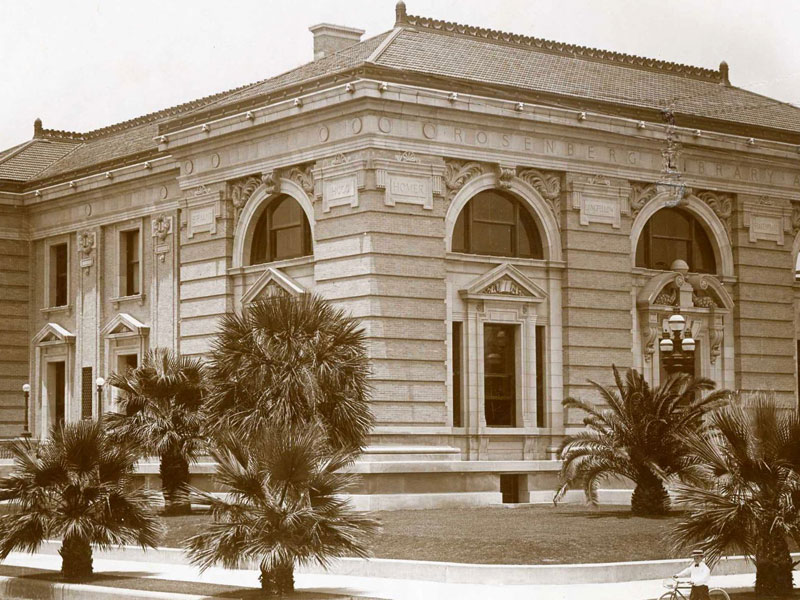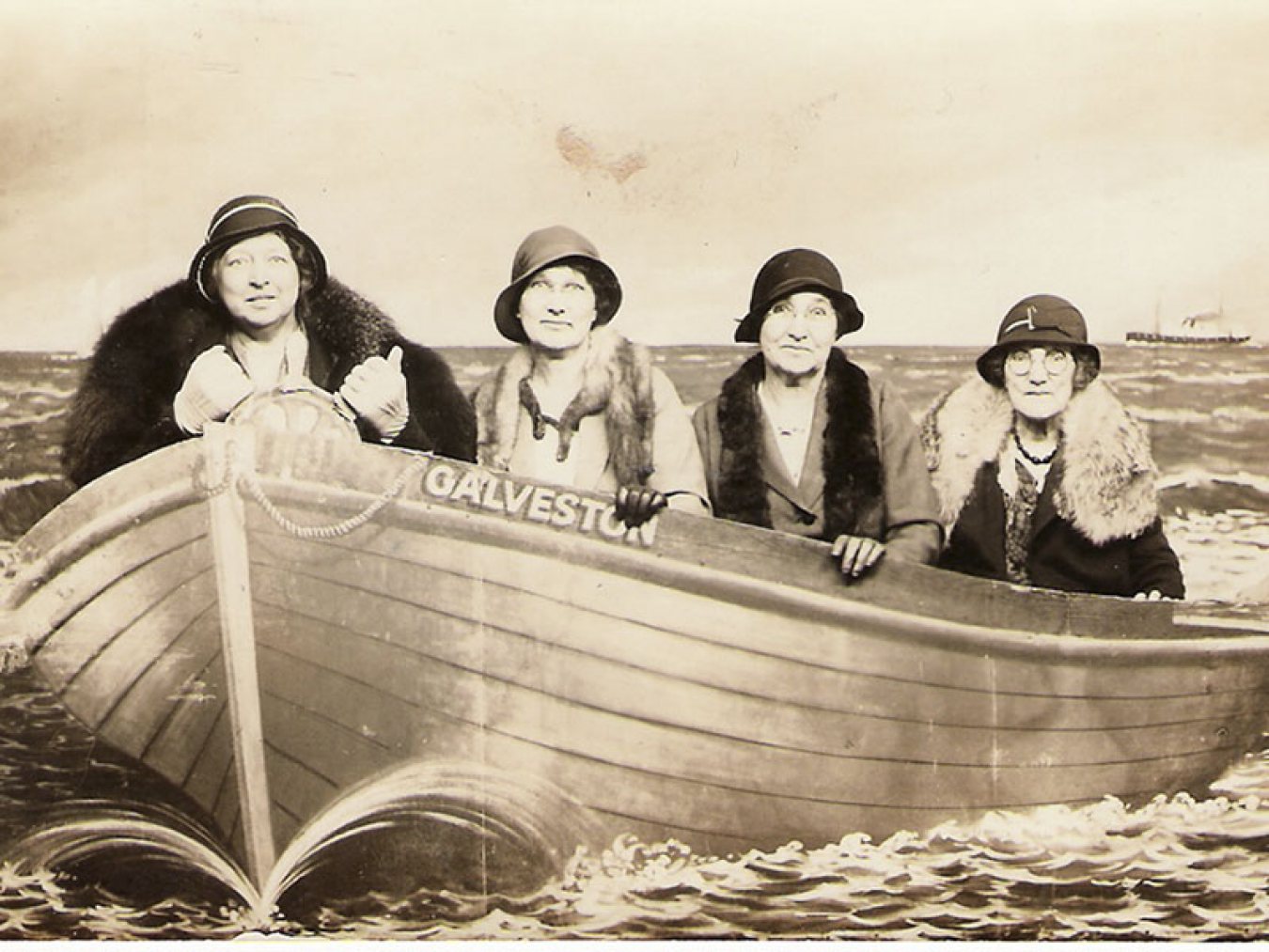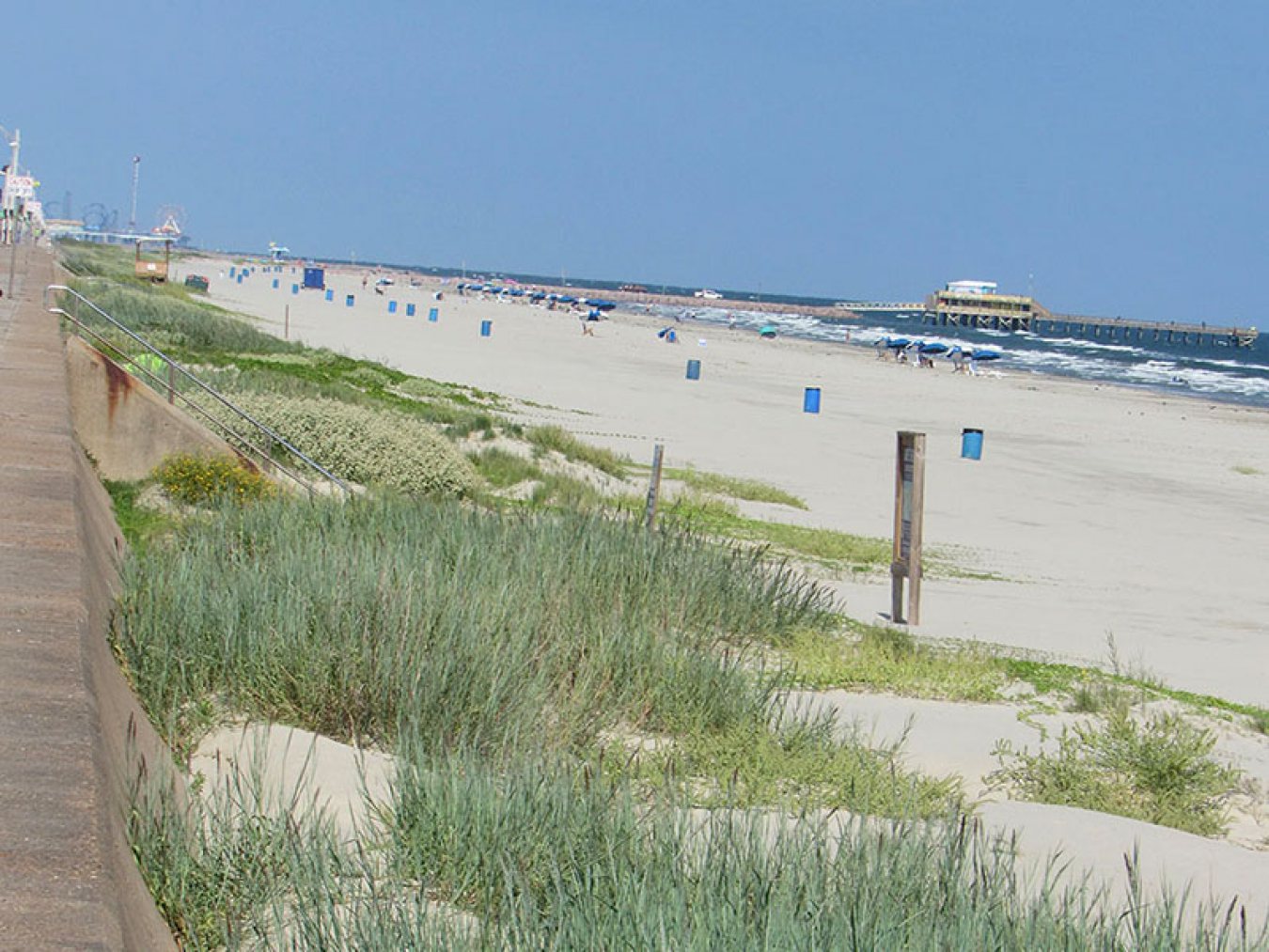The Sailmaking Tools of Captain William Scrimgeour
Rosenberg Treasure of the Month
The Rosenberg Library Museum has sailmaking tools that were donated by the prominent Morgan family of Galveston. It is probable that Captain William Scrimgeour, an avid seaman, owned and used these sailmaking tools. Captain Scrimgeour was the father of Jean Coventry Scrimgeour who married into the Morgan family in 1890.
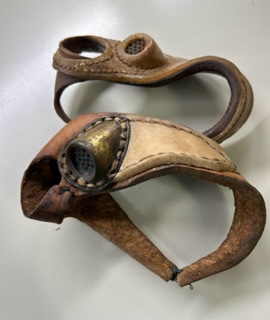
Palm. Made of leather which is curved to fit the inside of the palm of the hand with a hole for the thumb and a dimpled brass stud. The palm tapers around the hand and fastens with a metal buckle. The needle was pushed through the cloth by pressing against its head with the dimpled brass stud. Ca. 1860
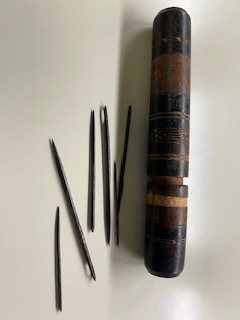
Needle case. Cylindrical wood designed with bands of both dark and light wood incised with decorations. Needles included. Ca 1860
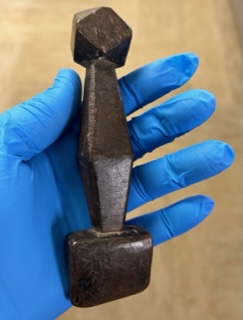
Rubber. Made of wood with a chisel end. This instrument is used by sailmakers to flatten the seams of a sail. Ca. 1860
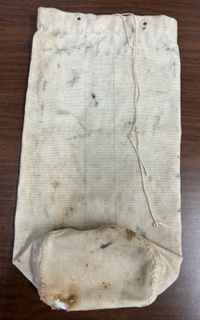
Rubber. Made of wood with a chisel end. This instrument is used by sailmakers to flatten the seams of a sail. Ca. 1860
Sailmaking Tools
The sailmaking tools include a hand fid, a sailmaker’s palm, a seam rubber, and sailmaker’s needle with case. A canvas bag with a drawstring was used to carry these items. These tools were used to make and repair sails circa 1860.
- A hand fid is a conical, pointed piece of hardwood used for splicing large ropes and opening the eyes of rigging.
- A sailmaker’s palm is made of leather which is curved to fit the inside of the palm of the hand with a hole for the thumb and a dimpled brass stud. The palm tapers around the hand and fastens with a metal buckle. The needle was pushed through the cloth by pressing against its head with the dimpled brass stud. It is kind of like an oversized thimble.
- The seam rubber is made of wood with a chisel end. It was used by sailmakers to flatten the seams where strips of canvas were joined to make a sail.
- The needle case, with needles included, is a cylindrical wood case designed with bands of dark and light wood incised with decorations.
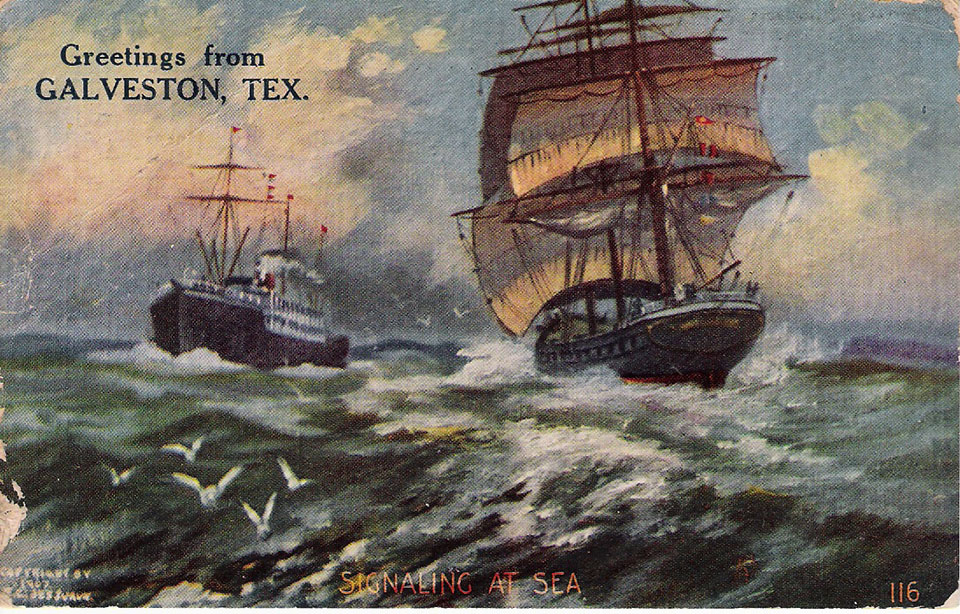
| Dated 1907 – “Signaling at Sea” This postcard was addressed to Miss Ethel Blanton of Sabine, Texas and was postmarked in Galveston, Texas on August 14, 1908. | Courtesy of the Rosenberg Library and Museum |
The History of Sailmaking
Cloth sails can be seen in Egyptian art as far back as 3300 B.C. and was in use in several countries. Fabric sails were often heavy and unwieldy. When lighter fabrics became available, sailmakers combined fabrics of differing weights to make a more effective sail. Usually, the heavier fabrics were along the edges of the sail where reinforcement was needed. The lighter, more flexible fabric was used in the middle of the sail and cut with extra material to help catch the wind.
Sailmakers were skilled craftsmen that made and repaired sails, often working in teams. Most sailmakers trained apprentices as they worked so that these skills were passed on. Some larger ships employed craftsmen as crew so that sails could be repaired while at sea and voyages could go longer distances.
Sailmakers on land worked in a building called a sail loft. The sail loft was large enough for the sails to be spread out to cut and sewn by hand.
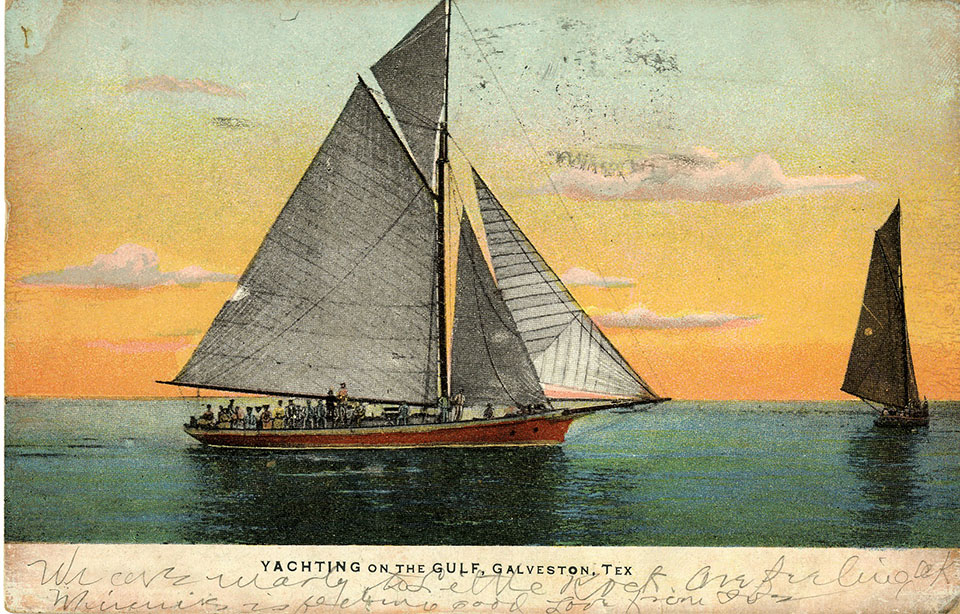
| Yachting Postcard, Dated 1906 | Courtesy of the Rosenberg Library and Museum |
Captain William Scrimgeour
Born in 1836 in New York, William Scrimgeour ran away from his boarding school in New Hampshire and went in search of adventure at sea. After traveling the world several times, he made Galveston his home in 1857.
In Galveston, twenty-one year old William Scrimgeour began working for the Morgan Steamship Line as first officer. When the Civil War started, Captain Scrimgeour joined the Confederate cause and served as a lieutenant on the General Rusk. This ship was used by the Confederates as a signal and reconnaissance boat. It cruised Galveston harbor gathering information and trying, unsuccessfully, to run the Union’s blockade.
Later, Captain Scrimgeour took charge of the Confederate blockade-runner Alice. A blockade-runner was a ship built for speed used to get past the Union blockade. Once through the blockade, the Confederacy was able to trade goods, supplies, arms, and mail with others in the Confederate States of America. The Alice made 24 successful runs to the ports of Galveston, New Orleans, Key West, and Havana. In 1864, Federal officials captured Scrimgeour when he was leaving Havana. He was kept as a prisoner of war in Boston for 18 months before being released in a prisoner exchange.
After the war, Captain Scrimgeour again worked with the Morgan Line. During this time, he served in the Galveston Pilots’ Association in various positions. He was a bar pilot and the harbor master during the 1900 Storm. He and his wife, Josephine, lived in Galveston with their three children. In 1919, Captain William Scrimgeour died at his home.
The Treasure of the Month is located on the library’s historic second floor near the East Entrance. It can be viewed during regular library hours, 9:00 a.m. to 5:45 p.m. Monday through Saturday and from 9:00 a.m. – 8:45 p.m. on Tuesdays and Thursdays. For more information, please contact Ivy Albright, Museum Curator at 409.763.8854 Ext. 125 or at museum@rosenberg-library.org.
Eco-Art Kayak Adventure
Experience a Fishing Adventure!
Rosenberg Library
Rosenberg Library has offered over a century of community service to the Galveston area, and is the oldest public library in Texas in continuous operation. The building itself was dedicated on June 22, 1904, the birthday of its patron, Henry Rosenberg. The Moody Memorial Wing opened in 1971, more than doubling the floor space and allowing for a children’s library, a history center, several galleries to showcase museum collections, and later, a computer lab. The Library accepted its first museum piece shortly after it opened in 1904. Since then, thousands of rare and interesting objects from around the world have been added to the collection. Each month they display a “Treasure of the Month”. Learn more by visiting the Rosenberg Library page and the Gifts of Henry Rosenberg section.